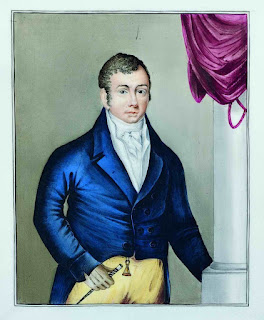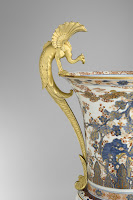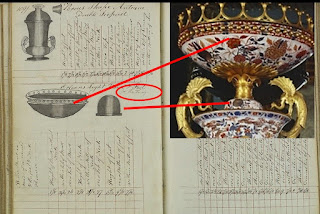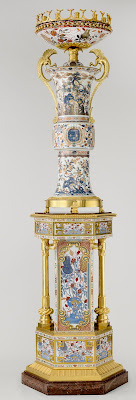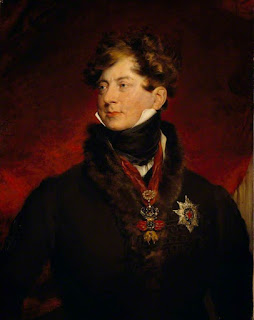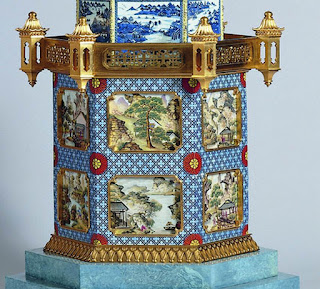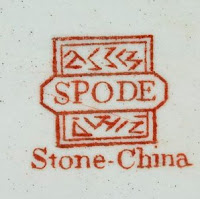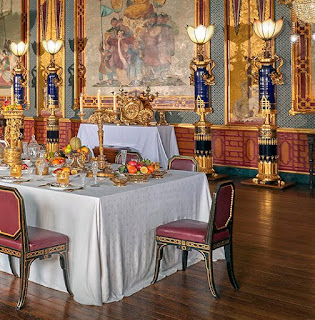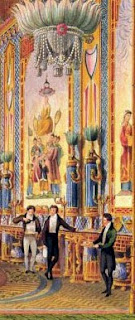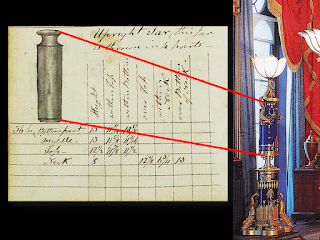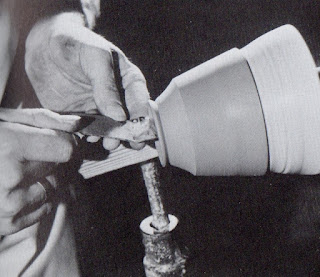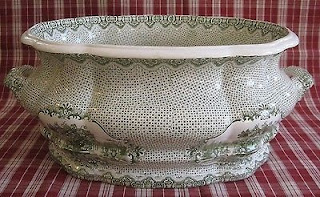 |
| Violin c1780 |
 |
| Josiah Spode I, National Portrait Gallery |
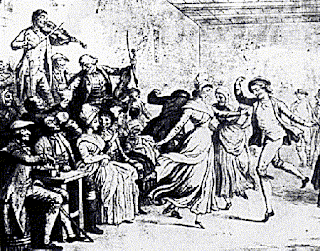 |
| 'Festivities' and violinist |
 |
| Stoke to Bagnall - a couple of hours walk each way |
How young Spode I made his way from Stoke, where he lived, to Bagnall, to play his violin at the 'festivities', we do not know. But most likely on foot or perhaps hitching a ride on a cart.
| Bagnall in its Staffordshire Moorlands setting |
Peter Roden** says:
'No one seems to have attached any significance to this talent in relation to his [Josiah Spode I] other obvious talent in the pottery industry.
Learning to play the violin is not something that one often learns in later life, and in Spode’s case, the suggestion [from Adams' writing] is that he had developed a local reputation as a violinist before he became famous as a potter. Is it not relevant to consider who might have taught him - after all, having access to violins is not something that one normally associates with eighteenth century paupers?
Whilst we are never likely to know who actually taught him, or gave him his first access to a musical instrument, we can note that (a) it would have been someone cultured, and (b) it is possible that his musical abilities may have provided his initial introduction to influential potters in his childhood.'
Peter Roden's research, then, raises intriguing questions about the early life and range of skills of the famous potter and founder of the Spode company. It is also recorded elsewhere that Spode I with his violin was for hire and played for money.
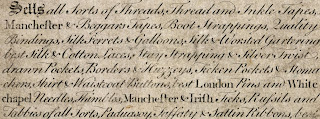 |
| Detail of an haberdasher's trade card (London) |
**This blogpost is based on detailed research by Peter Roden. The subject has always fascinated me and it is wonderful to find out more about the founder of the Spode company from this research. As ever, I thank Peter for sharing his decades of Spode family research with me. I couldn't do this blog without his work. I am in awe of the details and new Spode family (and Spode company) history he discovered over the years.
For more information enjoy consulting:
'Josiah Spode (1733-1797): his formative influences and the various Potworks associated with him' is available to consult at the Spode archive. The publisher's website, the Northern Ceramic Society, can be found by clicking NCS. Click here for my booklist with more details about Roden's publications.













